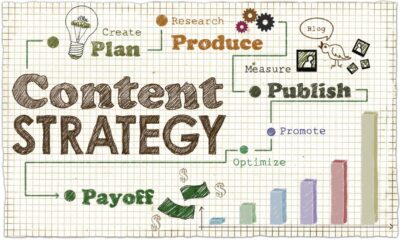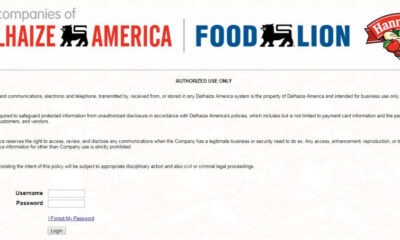

Business
What Makes Up A Turnkey Packaging System?
A turnkey packaging machine is, pretty sincerely, a packaging gadget that includes all the vital devices to put together a product for the shelf. However, the question posed by using this text is relatively misleading, as a completely operational packaging line will vary depending at the product being packaged, the distance available, the desires of the packager, and lots of other elements. As an example, we are able to take a guided tour down a fictional packaging line and speak the gadget and some of the options to be had to the machines mentioned.
Power Conveyor Systems
We will start putting in place our custom packaging line by leveling an electricity conveyor gadget on the floor. For automated packaging lines, power conveyor systems are ought to move boxes from one gadget to another. These systems are the circulatory system for packaging any product. Of path, no longer every packager will use a very automatic gadget, and a few can be completely exertions primarily based strains. In those cases, the strength conveyors may be replaced by way of non-powered, roller, or skate conveyors. In different instances, stand-alone machinery which includes a filler or capper may additionally use a slide song or positioning nest in the region of the conveyor. The operator of those semi-automatic machines will slide the bottles in place alongside the tune or into the location nest for the packaging system to start.
Loading Turntable
At the start of our conveyor system, we are able to use a loading turntable to get bottles onto the packaging line. This will require the operator of our packaging line to load empty bottles onto the turntable, in an effort to then deliver the bottles to the conveyor system for transfer to the numerous machines mentioned below. The loading turntable is one in all many ways to begin the packaging technique, with different alternatives consisting of unscrambling machines, which might permit an operator to clearly sell-off bulk bottles right into a hopper whilst the device sets them at the conveyor and even lining conveyors that use a loading desk and put together bottles in strains for delivery to the main conveyor system. Loading turntables can be used for bottles that arrive in smaller instances, consisting of alcohol bottles or mason jars, at the same time as unscramblers are desirable for better speed bottles that could arrive in bulk boxes. Lining conveyors paintings properly for non-round bottles can gift problems for other loading alternatives.
Bottle Rinse
The first machine that our bottles will come upon on our fictitious packaging line will be an inverting rinsing device. Container cleansing devices, such as bottle rinses, are used to take away dirt and debris from bottles which can gather all through the manufacture of the bottle, the transportation of the bottle, or even from the simple garage as the container awaits it activate the line. Some packagers can also pick to use a bottle vacuum rather than the inverting machine, which blasts the interior of the field with air, seals over the outlet, and vacuums out the dirt and particles. Other packagers may additionally choose to apply a bottle washing machine to smooth the outdoor of the field as well, relying on the box and the want. Not every packaging line will use container cleansing equipment, although those packaging ingredients, drinks, prescribed drugs, and different fit for human consumption or ingestible merchandise will frequently require such machinery. In addition to the automatic fashions, box cleansing gadgets also can be manufactured as hard work-driven gadgets for those with decrease manufacturing demands.
Liquid Filler
Filling machines upload consistency and reliability to the amount of product that is going into every bottle. While some low manufacturing packagers might also hand fill product, or others may additionally achieve this out of the way of life, filling machines add performance to the process whilst hand filling is simply no longer viable. For our line, we can use an automatic overflow filler, which fills each and each bottle to the same level, even supposing the inner volume of the bottles varies barely. Other filling standards may be used for filling by way of volume or internet weight, in addition to specific machines for decrease and better viscosity products. Like maximum of the equipment described in this article, tabletop and semi-computerized machines exist as options to the completely automatic filler.
Nitrogen Purge System
The subsequent system on our packaging line will be a nitrogen purge gadget located simply before the capping system. Like field cleansing equipment, no longer every machine will take the benefit of the purge. However, for products like foods and drinks, the nitrogen purge system can extend shelf lifestyles even as also preserving flavor, color, and texture. The gadget does this by replacing a great deal of the oxygen in the bottle, or inside the headspace of the bottle, with nitrogen, a fuel that has a less damaging impact on many perishable products.
Capping Machine
To retain on the adventure down our automated line, the packing containers can be provided to an automated capping machine. In our case, we will use a spindle capping device to apply simple screw-on kind caps. The spindle capper includes a cap delivery device that allows it to cap reliably and continuously, leaving the operator of the packaging line to surely replenish bulk caps from time to time. Of path, distinct caps may additionally require an extraordinary type of capping device, from snap-on lids to ROPP caps to corks, the capping machine will suit the form of closure used for the box. Some packagers may use additional or alternative sealing equipment, including induction seals, neckbands, decrease sleeves, and more.
Labeling device
The labeling system lets packagers the capacity to show off their product and connect with the client. From pix and symbols to facts along with components, commands, and expiration dates, this is the device that lets the product communicate with the patron. For our gadget, we can use a wrap labeler that, no longer extraordinarily, wraps an unmarried label around our bottle because it movements down the energy conveyor machine. Other formats may be used for labels, including back and front, just front, panel, and even top and backside labeling. Most labelers can even consist of coding equipment that allows data such as lot range and expiration date to be easily changed. Of direction, not each packager will use a labeling gadget, as some bottles or other boxes can be pre-printed, etched, or otherwise marked.
Bundling Machines
At this point on our packaging line, we can use a cut-back wrap bundler to create four and 6 packs of our product, cut-back wrapped for comfort. As the bins exit the capping gadget, they’ll slide into place at the bundler to acquire the wrap, exiting the gadget in corporations of four or six, relying on how the machine is installed. There are many other packing options available, which include case erectors, case packagers, cartoners, and extra. Some companies may additionally simply hand p.C. The completed merchandise as they put together them for transport.
Accumulating Conveyor
Lastly, on our packaging line, we can use a collecting conveyor to acquire products for the packaging procedure. This may be an extension of the electricity conveyor machine, or it is able to consist of easy roller conveyors wherein bundles of product can wait to be packaged. Just as we used hard work to load a product at the start of our line, we are able to use hard work to dump the product and put together it to deliver on the quit of our line. Other structures may also use a collecting turntable, or may additionally even automate the packing system by means of adding a palletizer and pallet wrapper to the packaging line.
So to in the end solution to the question presented by way of this text, a turnkey packaging device is made up of anything device the particular packager wants and needs to put together product for the purchaser. It may additionally encompass the machinery defined above in our very own made-up device: energy conveyors, loading turntable, rinsing system, filler, purge machine, capper, labeler, bundler, and gathering conveyor. However, a turnkey packaging system may additionally consist of an easy tabletop liquid filler and chuck capping gadget, nothing more. And of course, there are many alternatives among the bare requirements and the completely computerized machine. Finding the equipment that works for your product, box, area, and manufacturing will lead you to the ideal turnkey solution for your own packaging task
Business
Understanding Your Rights in a Building Dispute

Construction disputes are generally tense and complex for homeowners builders contractors. Your awareness of your rights in the event of a dispute is essential to effective settlement of the dispute. Delays substandard work contract breaches or payment problems are all possible elements of such disputes. Confidence to deal effectively with the problems can be gained through acquaintance with the legal construct of construction contracts. Misunderstanding or vague words of a contract usually cause disputes that can bring in confusion to the two parties. Protection of your interests entails your knowledge of your own legal responsibilities and rights as a builder or a homeowner.
When Should You Hire a Building Disputes Solicitor?
Seeking legal advice at an early stage is important in the case of a construction dispute. If a dispute with a contractor or homeowner gets out of hand beyond simple miscommunication legal guidance may be necessary. Your rights will be protected and your case will be dealt with properly if you instruct a solicitor. A building disputes solicitor can provide you with the tools you require to proceed with your dispute by clearly establishing your rights and responsibilities under the contract. They can help you decide if the most appropriate action is arbitration mediation or litigation. By helping to resolve the conflict amicably their intervention may sometimes prevent it from escalating.
How Solicitors Help Resolve Disputes Over Variations and Change Orders
Change orders and variation clauses are standard in construction contracts and they sometimes result in conflict. Because of unforeseen occurrences or changing requirements during the project these clauses authorize changes to the original scope of work. However there could be conflicts regarding the scope of the changes or associated costs. A building disputes solicitor can prove to be extremely useful in such circumstances with regards to understanding the conditions of the contract. They will help establish if the prescribed procedures for authorizing variations have been complied with and if the variation orders are within the contract terms. In a bid to reflect changes precisely solicitors also help in preparing addenda or contract amendments. For additional work they can verify the billing to ensure that it is fair and according to the contract.
By obtaining legal counsel both sides can avoid misunderstandings and miscommunications that may lead to long and costly court cases. In some instances lawyers may suggest mediation or negotiation as other dispute resolution methods which can lead to faster and more cost-effective settlements. If a settlement is not possible in more serious cases the attorney can prepare for litigation and represent your interests in court.
Dealing with Owner-Builder Disputes: What Legal Protections Apply?
While dealing with owner-builder disputes is sometimes challenging it is very important to know your legal rights. Owner-builders are obligated by law in most jurisdictions to comply with specific insurance and licensing regulations which act to protect both parties in future disputes. If issues arise such as construction defects delays or payment disputes the owner or contractor can seek recourse under consumer protection or contract law. Owner-builders generally must provide guarantees in relation to the materials and workmanship for a set period as per the law. It is often recommended that mediation or arbitration be considered prior to going to court if the dispute cannot be resolved through friendly settlement. By getting the services of a lawyer at the earliest you can make sure that you comply with correct procedures and avoid costly mistakes by having your rights and duties explained. With the correct documents like signed agreements variation orders and letters you can increase the chances of a lawsuit victory. Owner-builder disputes can be resolved ultimately faster fairly and with less hassle if you know your rights and have professional guidance.
Business
Unlocking Growth: Essential Strategies for Small Business Success

In the fast-paced realm of entrepreneurship, small businesses face both thrilling opportunities and formidable challenges on the path to growth. The journey from fledgling startup to thriving enterprise is fraught with pivotal decisions that can spell success or failure. With market dynamics in perpetual motion, how does one ensure a business not only survives but thrives? The secret lies in unlocking the right strategies that cater to scalability, financial robustness, and market adaptability. This article delves into the essential considerations small business owners must keep in mind to steer their ventures toward sustained growth and success.
Growing Pains or Gains Ensuring Scalability Without Compromising Quality
As a small business owner, envisioning growth is exciting, but it also comes with its own set of challenges. One critical aspect to address is scalability. Can your business model expand without sacrificing quality or customer satisfaction? By focusing on scalability, you can streamline operations and optimize processes, achieving economies of scale that lower costs per unit as your business grows. This means enjoying higher profit margins without compromising the value delivered to your customers. Efficient resource allocation is key, ensuring that time, money, and manpower are directed towards essential tasks. This flexibility allows your business to remain responsive to market changes, setting the stage for long-term success.
Financial Foundations Crafting a Blueprint for Business Growth
Funding your growth initiatives requires a solid financial strategy. It’s crucial to develop a comprehensive financial plan that includes effective budgeting, meticulous cash flow management, and exploring diverse funding sources. By setting clear financial goals aligned with your strategic aims, such as market expansion or operational efficiency, you can ensure your budget is actionable. Implementing a robust cash flow monitoring system is vital to maintain liquidity and avoid financial shortfalls. Additionally, diversify your funding portfolio by exploring options like crowdfunding or angel investors. This multidimensional approach not only supports immediate growth opportunities but also builds resilience against financial uncertainties.
Brand Brilliance Enhancing Your Presence Through Strategic Marketing
To capture a wider audience, enhancing your brand identity and marketing strategy is essential. As we move into 2025, integrating trends like artificial intelligence, short-form videos, and sustainable practices will redefine consumer engagement. Strengthening your brand involves creating a memorable experience that resonates with your target market. A data-driven approach allows you to personalize marketing efforts, increasing engagement and brand loyalty. By continuously refining your communication techniques and leveraging social proof, you can effectively highlight the unique benefits of your offerings and stand out in a competitive market.
Digital Dreams Realized Transforming Your Business for Growth
In today’s fast-paced market, digital transformation is crucial for small businesses aiming to streamline operations and boost competitiveness. Embracing technologies such as cloud computing and advanced AI can scale your operations and enhance customer experiences by personalizing engagement and improving efficiency. Digital initiatives can significantly uplift customer satisfaction and loyalty, driving higher revenue and market share. Integrating digital strategies isn’t just an option for survival; it’s a pathway to thriving in an increasingly competitive landscape.
Building a Dream Team Enhancing Talent Retention Through Culture
Cultivating an organizational culture that attracts and retains top talent is essential for business growth. This involves fostering effective team dynamics where open communication, learning opportunities, and diversity are prioritized. A competitive workplace environment is crucial, as many employers struggle with employee retention and attracting new talent. By establishing an appealing employee value proposition, you can significantly reduce turnover costs. Creating a supportive and inclusive atmosphere not only enhances employee satisfaction but also drives long-term business success.
Insight-Driven Triumphs Harnessing Market Insights for Strategic Growth
Thriving in a competitive marketplace requires thorough market research and competitive analysis. Understanding emerging trends allows you to identify new opportunities and potential threats that impact your business growth. Evaluating competitors’ offerings and customer feedback provides a clear comparative landscape. Regularly assessing your strengths and weaknesses using SWOT analysis ensures adaptability to market changes. These insights inform strategic decisions, helping you create innovative strategies that propel your business forward.
Efficient Invoicing for Seamless Expansion
A consistent and simple invoicing system is essential for expanding your small business efficiently. By using an online invoice builder, you can generate professional invoices that reflect your brand identity, including your logo and company colors. Setting precise payment terms and issuing invoices promptly enhances your cash flow management, ensuring timely payments. Offering various payment options caters to diverse customer preferences, reducing barriers to payment and fostering stronger client relationships. Embracing customizable invoice templates allows you to save time and effort, ultimately freeing up resources to focus on strategic growth initiatives.
The road to small business growth is far from linear; it’s a dynamic journey filled with evolving challenges and opportunities. As you navigate this ever-changing landscape, remember that success hinges on adaptability, resilience, and strategic foresight. By embracing scalable operations, crafting robust financial plans, and leveraging modern marketing and digital tools, you align your business with the demands of tomorrow’s market. Moreover, fostering an organizational culture that prioritizes talent retention and capitalizing on market insights can propel your venture forward. The canvas of small business is vast, painted with the vibrant hues of innovation and perseverance. Let these considerations guide your brush strokes as you create a masterpiece of sustainable growth and enduring success.
Business
Innovative Corporate Entertainment Ideas for Team Building

Corporate entertainment which promotes closer bonds and team cohesion has grown to be an important part of contemporary company tactics. In order to improve their brand image and client loyalty businesses are investing more and more in customised experiences. These gatherings which can range from private parties to group exercises produce enduring experiences that foster relationships with both clients and staff. An effective corporate event can be used as a venue to celebrate accomplishments within the company, inspire employees and build relationships. These events are meticulously organised to provide a distinctive and delightful experience while also being in line with the company beliefs and objectives. Enhancing worker morale, increasing productivity and strengthening organisational culture all depend on corporate entertainment which eventually helps businesses expand. Corporate entertainment offers a creative channel for client engagement and business innovation in a changing market.
Trends in Corporate Entertainment: What’s Popular in 2025?
By 2025, engagement, sustainability and customised experiences for clients and staff will be the top priorities in corporate entertainment trends. Businesses are increasingly choosing immersive and interactive experiences over standard events. Events that are virtual or hybrid are becoming more and more popular because they provide accessible ways for audiences around the world to take part. To increase interest and engagement, these events use interactive digital tools, gamification and virtual reality. Businesses are working to provide sustainable events like zero-waste parties as sustainability has become a top priority. To lessen their impact on the environment event planners are choosing sustainable venues, use less electricity and obtaining locally produced food. Corporate events are heavily influenced by personalisation, with experiences created to suit each participant tastes and passions. Personalised entertainment choices such as participatory culinary lessons or live performances make an event more memorable. In 2025, corporate getaways will change to become wellness focused gatherings that support physical as well as mental health. Team building events are incorporating mindfulness exercises, yoga classes and meditation to help staff refuel. The popularity of corporate social responsibility CSR events is another new trend. In order to promote a sense of community and align with their values businesses arrange volunteer opportunities or charity galas. Corporate entertainment will reflect a growing need for meaningful driven by purpose events that foster creative and lasting relationships between partners, clients and employees.
Navigating Legal and Ethical Considerations in Corporate Entertainment
Since local laws differ businesses need to be aware of the ones pertaining to the use of alcohol at corporate functions. When serving alcohol in public places or outdoors right permits could be required. Businesses should also take precautions to make sure that drinking alcohol does not result in improper conduct, liability issues or safety hazards. All participant safety and wellbeing must be given top priority with security measures and transportation choices available. Intellectual property is another crucial legal factor. Businesses must refrain from exploiting copyrighted music, photos or content without the required permission when conducting entertainment events. Getting the licencing rights for any media used at business events is part of this. Companies must carefully screen all materials used in the event because using illegal content might result in expensive lawsuits. In terms of ethics corporate entertainment planning must take inclusivity into account. All staff members and visitors should be able to attend events regardless of their physical capabilities or personal preferences. Making adjustments for people with impairments and making sure that a range of dietary requirements are satisfied are both examples of accessibility. Aside from avoiding harmful or discriminatory content event themes and activities should be considerate of cultural, religious and personal values. Fairness and openness should be given top priority at corporate entertainment events.

 Business4 years ago
Business4 years agoFind out how useful a loan is without a credit check

 Digital Marketing4 years ago
Digital Marketing4 years agoIs YouTube Marketing Capable of Taking Your Business to the Next Level?

 Food4 years ago
Food4 years ago5 Best and Worst Foods for Boosting Metabolism

 Business4 years ago
Business4 years agoContent Creation Tips Every Digital Manager Needs to Know

 Business3 years ago
Business3 years agoBest Workplace Upgrade

 Lifestyle4 years ago
Lifestyle4 years agoHow to Choose the Best Air Fryer for Me

 Fashion4 years ago
Fashion4 years ago8 Top Leather Jacket Picks To Try Out This Year

 Tech5 years ago
Tech5 years agoFood Lion Employee Login at ws4.delhaize.com – MyHR4U



















